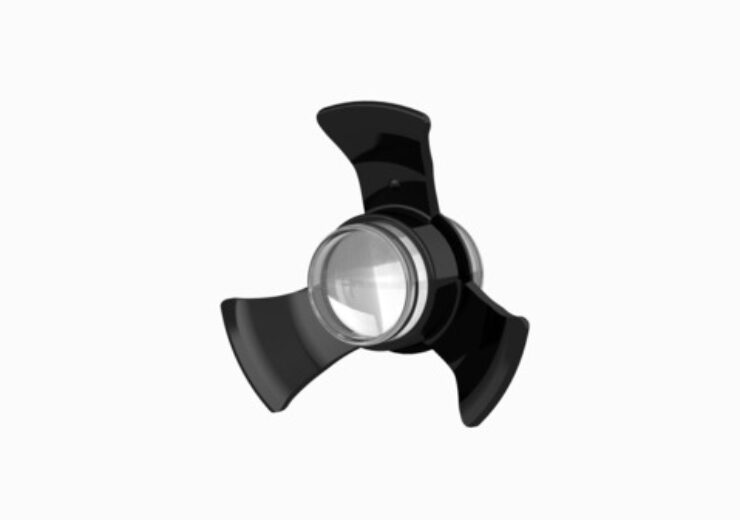The CONCERTO trial will recruit 100 adults aged 65 and older living with stable, bilateral central scotomas due to late-stage AMD and fovea-involving geographic atrophy or disciform scar to receive a SING IMT in one eye

SING IMT by Samsara Vision (Credit: Business Wire/ Samsara Vision)
Samsara Vision, a company focused on bringing vision and freedom back to patients with late-stage, age-related macular degeneration (AMD) through advanced visual prosthetic devices, today announced the completion of the first U.S. surgeries of its SING IMT (Smaller-Incision New-Generation Implantable Miniature Telescope), as part of the CONCERTO clinical study, a U.S.-based Food and Drug Administration (FDA) study to evaluate improvements in visual acuity and safety of the device in people living with late-stage AMD. David RP Almeida, MD, MBA, PhD, from Erie Retinal Surgery (PA), and Marc H. Levy, MD, from the Sarasota Retina Institute (FL), performed the first procedures using the SING IMT in late June.
“The SING IMT procedure represents a potential technological leap forward and the surgery, using the pre-loaded delivery system, allowed for not only a smaller corneal incision, but also a consistent and predictable insertion of the device,” said Dr. Levy.
The CONCERTO trial will recruit 100 adults aged 65 and older living with stable (non-active neovascularization), bilateral central scotomas (blind spots) due to late-stage AMD and fovea-involving geographic atrophy or disciform scar to receive a SING IMT in one eye. In addition, candidates cannot have had previous cataract surgery in the study eye and must agree to post-operative comprehensive visual rehabilitation and training.
Dr. Almeida added, “The surgery went well. I’m pleased that the SING IMT telescopic micro-optical device allows for ease of insertion and centration. It’s wonderful to see the excitement of eligible phakic patients with severe vision loss and – as these patients adapt and learn to use their new vision during visual rehabilitation – I believe we will see a significant interest and demand for this important intervention.”
“It’s highly encouraging that our first surgeries went smoothly. We look forward to working with the eye health community across the country during the CONCERTO study. Our goal is to bring our new technology to people blinded by late-stage AMD across the United States,” said Thomas Ruggia, Chief Executive Officer at Samsara Vision. “We intend to work closely with the FDA to determine a timely pathway to bring the SING IMT to market in the United States.”
SING IMT
The SING IMT is a Galilean-style telescope implant designed to improve visual acuity and quality of life for patients with late-stage AMD. It is implanted during typical, out-patient cataract surgery with a corneal incision range between 6.5 mm to 7.5 mm. Images seen in “straight-ahead” vision are magnified 2.7x and projected onto healthy, undamaged areas of the macula in the back of the eye, reducing the apparent impact of the AMD “blind spot” on central vision.
Unmet Treatment Needs in Age-Related AMD
Age-related macular degeneration (AMD) is a leading cause of permanent vision loss for people age 50 and older, and the number one cause of blindness in people age 65 years and older. As many as 11 million Americans are affected by some form of macular degeneration and this number will increase to 22 million by 2050. Nearly 2 million Americans have advanced forms of AMD with associated vision loss. While treatments exist to try to slow the progression of AMD, and there are assistive devices that can help people with reduced vision see better with magnification or more light, many patients will progress in their disease. There is no cure for late-stage AMD. The SING IMT is approved for late-stage AMD patients who are 55 years of age or older in CE Referenced Countries, but it is not currently FDA approved in the United States.
The SING IMT is not a cure for late-stage AMD. It will not return vision to the level a patient had before AMD, nor will it completely make up for vision loss. The most common risks of the SING IMT surgery include inflammatory deposits or precipitates on the device and increased intraocular pressure. Significant adverse events include corneal edema, vision-impairing corneal edema, corneal transplant, and decrease in visual acuity. There is a risk that having the telescope implantation surgery could worsen your vision rather than improve it. Individual results may vary.
Source: Company Press Release
